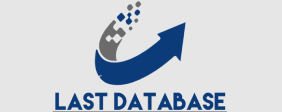In the bustling landscape of industry-specific email marketing. generic blasts simply don’t cut it anymore. To truly connect with your audience and drive meaningful results. you need to speak directly to their unique needs and challenges. One of the most effective ways to achieve this personalized communication is through meticulous segmentation. and segmenting by role is a particularly powerful strategy. By understanding the different positions held by your subscribers – from CEOs and marketing managers to engineers and technicians – you can craft highly relevant content that resonates deeply and boosts engagement rates. This targeted approach not only improves open and click-through rates but also builds stronger relationships and positions you as a trusted authority within your industry.
Why Role-Based Segmentation Matters
Consider this: a C-level executive is primarily concerned with strategic direction. ROI. and high-level industry trends. They likely have little interest in the nitty-gritty technical details that would captivate a product engineer. Conversely. the engineer is focused on the functionality. performance. and technical specifications of a product industry email list or service – information that might bore the executive. Sending the same email to both these individuals is a recipe for disengagement and potential unsubscribes. Role-based segmentation allows you to bypass that pitfall. It empowers you to tailor your messaging to address the specific pain points. goals. and priorities of each role within your target audience. This relevance translates into increased value for your subscribers and. ultimately. better results for your email marketing efforts.
Practical Steps for Role-Based Segmentation
So. how do you start segmenting your email list by role? The first step is data collection. Actively solicit role information during the signup process. Instead of simply asking for “Job Title.” provide a dropdown menu with predefined roles relevant to your industry. You can also use progressive profiling – gradually gathering more how to create content that converts information about your subscribers over time through surveys or targeted content downloads. Another valuable source is LinkedIn. Cross-referencing your email list with LinkedIn profiles can often reveal the current roles of your subscribers. Once you have this data. create distinct segments within your email marketing platform based on those roles. Some common industry-agnostic roles include: CEO/Executive. Manager. IT. Sales. Marketing. HR. Finance and Analyst/Researcher.
Crafting Role-Specific Content for Maximum Impact
With your segments established. it’s time to create targeted content. For executives. focus on industry trends. strategic insights. and case studies demonstrating ROI. For managers. provide practical tips for improving team performance and achieving departmental goals. Technical roles. such as engineers. will appreciate in-depth cuba business directory technical specifications. product demos. and troubleshooting guides. Sales professionals need content that equips them with the knowledge and tools to close deals. By tailoring your content to the specific needs of each role. you’ll not only see improved engagement metrics but also solidify your position as a valuable resource within your industry. fostering long-term relationships and driving sustainable growth.

